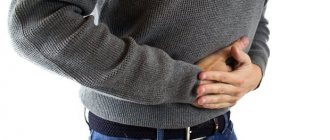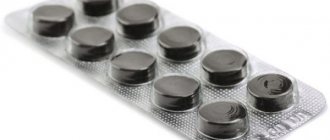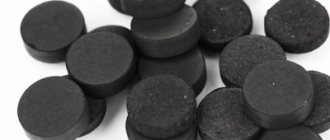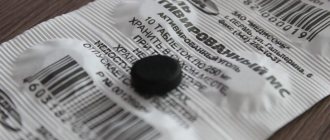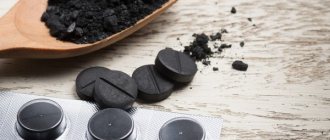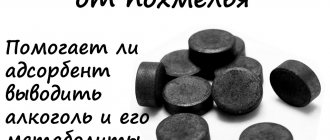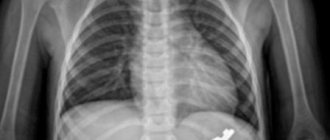The oldest remedy in the world, used since the time of Hippocrates for poisoning, is activated carbon. History has preserved the fact that the French chemist M. Bertrand conducted a bold experiment on himself, demonstrating the ability of charcoal to sorb poison. In 1813, he ingested a lethal dose of arsenic mixed with activated carbon, without dramatic health consequences.
Adsorption is a process in which a substance in a bulk phase, such as a gas or liquid, is absorbed by a solid. Why is activated carbon capable of adsorption? Because it is a material with a huge number of negatively charged tiny pores that electrostatically attract positively charged substances. It absorbs chemicals, reducing their active concentration by an average of 60%. At the same time, it does not dissolve, does not change its properties, is not digested in the gastrointestinal tract and leaves it, carrying away toxins.
Activated Carbon for Soil Health
The absorbing properties of activated carbon can be successfully used in a summer cottage. By feeding plants with this substance, you will simultaneously solve several problems:
- reduce soil acidity;
- reduce the amount of heavy metals and hazardous chemical compounds in the soil;
- feed the plants: the starch contained in activated carbon will appeal to almost all crops. But for greater efficiency, it is still better to use potato peelings.
You can add tablets or coal powder to water for irrigation. It is also effective to dig the tablets directly into the soil. When dry, they will absorb excess moisture and reduce the likelihood of root rotting. This is especially important for seedlings recently planted in open ground. There is no need to add too much coal so as not to change the quality of the soil.
Indications for use
The main indications for the use of Filtrum and Activated Carbon are:
- food poisoning;
- alcohol and drug intoxication;
- poisoning with salts of heavy metals;
- gastrointestinal infections.
Both Filtrum and carbon are capable of retaining toxins and poisons in their small pores . At the same time, the pores of Filtrum are much narrower, and the sorption capacity is higher, therefore the range of application of this drug is wider than that of Activated Carbon. Filtrum is prescribed for allergic reactions and for the prevention of intoxication for workers in the chemical industry.
This drug is also prescribed for hyperbilirubinemia – the production of increased amounts of bilirubin. This pathological condition occurs in Gilbert's syndrome and Gospel disease. Filtrum has the property of removing excess bilirubin from the body, unlike Activated Carbon, and is therefore widely used to normalize its concentration.
Filtrum is effective for another metabolic disorder – hyperazotemia. This condition is characterized by an increased concentration of nitrogen-containing products in the blood. It develops, as a rule, due to pathologies of the liver, kidneys or biliary tract. The filter, due to its small pore diameter, binds nitrogen-containing compounds before they exit the body.
Activated carbon for rooting cuttings
Plant cuttings are defenseless against fungi and infections, so it is worth protecting them from diseases using activated carbon. Add a few crushed tablets to the container where the plants are located and add water as needed. Charcoal is also an excellent alternative to root-forming preparations, because thanks to it, cuttings take root faster and take root better.
Treatment of plant cuts with activated carbon
thisday.in.ua
When working with plants, you often have to deal with such procedures as pruning, dividing, and removing damaged parts. After it, it is very important to disinfect the sections so that putrefactive processes do not begin. If there are no special preparations at hand, activated carbon will help out. Sprinkle the fresh cut thickly with it, without rubbing, and leave it on the plant.
Activated carbon can also be sprinkled on the roots of plants during replanting.
Activated carbon for combating fungal plant diseases
We have already said that coal perfectly absorbs moisture and does not allow pathogenic microflora to multiply. Therefore, it is also effective in combating fungal diseases, but only at the initial stage of their development or as a prophylactic agent. This is especially true for seedlings, which are often affected by blackleg - rot of the root collar of seedlings.
It is not easy to save plants, so at the first sign, immediately sprinkle the soil with crushed activated carbon. It is better to throw away the diseased plant to stop the epidemic, and also sprinkle the planting site with coal. If possible, plant the seedlings in separate containers with disinfected soil.
History of the drug
Even in ancient times, plant substances were used to treat poisoning. Charcoal was especially valued. And in the 20s of the last century, the substance lignin, also a component of wood, was discovered in Germany. Scientists have determined that after certain processing it acquires strong enterosorbing properties. Already in the 40s, hydrolyzed lignin was widely used to treat poisoning and various types of intoxication. In our country, drugs based on it appeared only in the 60s of the 20th century. The drug “Polyphepan”, which was a brown powder that had to be diluted in water, was considered very effective. But not all patients could drink such a suspension, so scientists were looking for a way to make taking the drug more convenient. This is how drugs based on hydrolytic lignin were created, including the drug “Filtrum-Sti”.
Activated carbon against mold in flower pot
prusakam.net
Flower lovers often encounter such a problem as mold in a flower pot. This is usually caused by overwatering and high indoor humidity. If you need to do something urgently, crushed activated carbon will come to the rescue. First, remove the layer of moldy soil, and then sprinkle the soil thickly with coal. After a few days, the coal should be replaced with fresh one.
Activated carbon needs to be crushed; whole tablets are not suitable, because they can provoke the appearance of mold by actively absorbing water from the surface. Always try to crush the coal when you sprinkle it on the soil.
Production of coal for hookah
Most factories producing hookah charcoal are located in Indonesia. This is due to the fact that the country has a huge amount of raw materials. To make coconut charcoal, only the outer shell of the coconut is taken. Usually it is thrown away, but in Indonesia it is necessarily selected for the production of coconut charcoal. Such production becomes waste-free. There is also another advantage to this - the conservation of natural resources.
Coconut shells have another important advantage - they do not contain wood. It usually emits its own aroma and has a certain taste. Coconut shells have virtually no odor if they are well dried. It is usually pre-dried in the sun. This happens quite quickly, since there is almost no rain in the country. When the shells are not sufficiently dried, they can emit an unpleasant odor. This feature will not affect the heat and the smoking device itself.
At the very beginning, the coconut shell is divided into pieces and burned. After this, it is sifted or passed through a double mesh. It is separated from dust and debris so that it does not get into the future hookah coal.
Next, the burned pieces go into a specially equipped mixer. In this device they are ground and mixed. A special adhesive substance is added to the composition to ultimately obtain a homogeneous mass. A natural product is used for the adhesive mass, usually fruit juice. Manufacturers do not disclose the name of the fruit, as it is a trade secret.
The resulting mass is driven through a press machine to give it the shape of future coal. The machine has special attachments that form briquettes. The finished briquettes go through the final drying stage, and the product is ready for use.
Charcoal powder is also used as a raw material for the production of hookah charcoal. Dry wood is selected according to its density. A good option is logs made from maple, white acacia, ash, pear, and hornbeam. The material is ground and sent under a machine press. It is then hand-packed and sold. Now some entrepreneurs have begun to make charcoal at home.
Activated carbon for feeding indoor plants
sad4-karpinsk.ru
Activated carbon can also be used to feed flowers. Many gardeners note that after using it, plants develop and bloom better. All this is thanks to the disinfecting properties of coal, which inhibits the development of dangerous bacteria and fungi, reduces soil acidity, and removes excess moisture.
For one pot you will need 1-2 tablets of coal. First, break them into 2-4 parts and dig them into the soil. Do not leave them on the surface, otherwise they may become moldy. Observe the plant, if all is well, feed other green pets in the same way.
Filtrum
Filtrum is a drug used for intoxication of any etiology.
1 tablet contains 400 mg of lignin. Additional composition:
- Primellose
- Povidone
- E 572.
There are 10 tablets in a contour cell pack. There are 1-6 packages in a cardboard pack.
Also, the tablets are placed in polymer bottles or jars of 10-100 pieces.
Manufacturer: ABVA Rus, Russia. The cost of coal is 106-271 rubles.
Filtrum has detoxification properties. The sorbent is used for endogenous and exogenous poisoning caused by the use of alkaloids, alcohol, and poisons.
Other indications:
- Allergies to medications and food
- Chronic intoxication in hazardous industries
- Foodborne illnesses
- Hyperazotemia
- Dysentery
- Purulent-inflammatory diseases
- Hyperbilirubinemia
- Salmonellosis.
Contraindications – exacerbation of ulcers, hypersensitivity, intestinal atony.
The drug is taken orally 1 hour before eating or taking other medications.
The dosage depends on weight, severity of the disease and age characteristics:
- 7-12 years – up to 2 tablets
- 4-7 years – 1 pill
- 1-3 years – 1/2-1 tablet
- Up to 1 year – half a tablet.
The duration of therapy for the acute form of the disease is 3-5 days. For chronic poisoning and allergies, tablets are taken for up to 21 days. After 14 days, re-treatment is possible.
Negative reactions of Filtrum include constipation and allergic manifestations.
Activated carbon against midges
Sometimes you can find midges in pots with flowers and seedlings. Often they simply fly into a house from the street, sometimes they end up with contaminated soil or on fruits and vegetables. It is very difficult to fight midges; they multiply quickly. They like moist, acidic soil. They lay eggs in it, from which voracious larvae hatch, feeding on the roots. As a result, the plant quickly weakens and may die.
There are many means to combat midges, and activated carbon in this case does not kill insects, but only becomes some kind of barrier to their reproduction. Sprinkle the soil in the pot with a thick layer of crushed tablets and the adults will no longer be able to lay eggs in it. In addition, the acidity and moisture of the soil will decrease. Of course, it is better to complement this method with others, but it will have a positive effect.
Video: how to choose the optimal sorbent
Read further:
Epilation or depilation, which should you prefer?
What powder to take in case of poisoning for children and adults ▶
How long does alcohol intoxication and hangover last for the body ❶ ❷ ❸
Products that delay fluid excretion
Cost of technical translation in Moscow
Article rating:
Share with friends:
You may also be interested in:
Smecta for poisoning: food, alcohol, for children and adults
Can children and adults drink nimesil for poisoning?
Lactofiltrum for alcohol or food poisoning - how to take for children and adults?
Composition of droppers for intoxication of the body with food and alcohol
Activated carbon - first aid for summer residents
If you have been bitten by a mosquito at your dacha or have scratched your skin, try to relieve the pain with activated charcoal. Grind it and gently apply it to the site of the bite or abrasion. You will soon notice that the discomfort has decreased and the swelling has disappeared.
Various chemicals are often used in the country. If pesticide is accidentally ingested, use activated charcoal immediately. Drink several glasses of water with a suspension of coal (1 g per 1 kg of body weight) and induce vomiting. Repeat the procedure if necessary, and then drink a glass of charcoal water as directed and consult a doctor immediately.
General similarities between them
The drugs in question belong to the same pharmacological group of adsorbents . They are used for food poisoning, intoxication with heavy metals, alcohol, and used in hazardous enterprises. They are of organic origin and are created on the basis of wood raw materials. Both products are manufactured in Russia and come in tablet form. It is recommended to crush them before use for better effect. Dispensed without a doctor's prescription as they are safe.
Activated carbon for water purification
bodyroom.ru
Activated carbon is actively used in water filters. It allows you to clean it from impurities and unpleasant odors. In country or camping conditions, coal can also be useful for water purification. Wrap several tablets of the substance in gauze and place at the bottom of a glass container with water. The larger the container, the more coal you should take. After 12 hours the water will become clearer.
Place the container with coal in a cool room, otherwise the number of bacteria in the water will increase.
Activated carbon will help out in a variety of situations. With its help, you will not only neutralize the effects of toxins in case of poisoning, but also protect seedlings from blackleg, reduce soil acidity, get rid of mold in flower pots, and protect plant cuts from rot. Feel free to use this drug in the country and at home. And if you have your own recipes for using coal in the garden or flower garden, share them in the comments!
The principle of action of enterosorbents
Analogs of the drug Activated carbon have a similar principle of action, which is based on the presence of a large surface area in small particles of the substance, for the accumulation of toxins and other substances. This property is called adsorption. It is provided by the porous structure of the drug grains. The strength of adsorption depends on the size of the free surface per gram of drug.
Enterosorbent is inert and does not combine with the sorbed substance. There are no changes in blood biochemistry.
Physiological filtration and similar processes of reabsorption of fluid in the intestinal lumen with the help of its villi are the principle of action.
The power of enterosorbents
Not only products received from food, but also those released from the blood are sorbed and filtered. They are captured by the enterosorbent, fixed on its surface, and then excreted with the feces.
To determine the power of cleansing with the help of sorbents, you should know that the intestinal villi allow molecules whose mass is lower than the mass of albumin to pass through. Therefore, toxic complexes with a larger mass do not leave the blood and therefore cannot be captured by sorbents. Also, high-molecular toxic compounds received from food do not penetrate into the blood; they are easily collected by analogues for elimination from the body.
Mechanisms of action
The basic mechanisms of action are represented by the following effects:
- binding of toxic substances that are taken orally and enter the gastrointestinal tract (GIT);
- binding of toxins that are released from the blood into the intestines by reverse filtration;
- absorption of toxins and wastes entering the intestinal lumen from the digestive glands - liver, pancreas, as well as gastric exocrine glands;
- binding of decay toxins - metabolites formed during stagnation of protein foods in the intestines (indole, skatole);
- sorption of nutrients when changing the diet due to the absorption of protein components and fatty acids;
- aid in digestion - transfer of food components;
- increase in the volume of the food bolus according to the type of use of dietary fiber;
- enhancing effect on enzymatic reactions.
To complement the effects of sorbents, it is worth noting their effect on the capture of viruses and bacteria, as well as inhibition of the reproduction of pathological microflora. The moderately irritating effect of enterosorbents on the intestinal wall enhances peristalsis and facilitates bowel cleansing. Also, sorbents have an enveloping, cytoprotective effect on intestinal villi.
